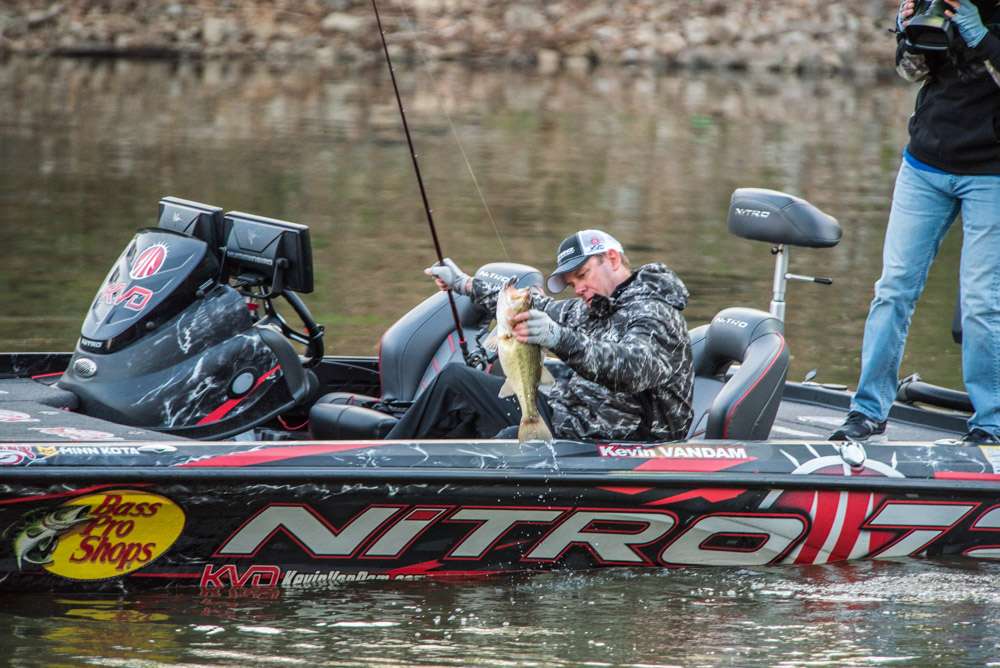
Everyone knows how much I love to fish a crankbait, especially this time of year.
In my mind, there isn’t a more efficient way to find bass and catch them, especially when environmental conditions are tailor-made for the technique.
The lure is so efficient. There’s not another bait in the tackle box that can cover various depth zones as efficiently and trigger bites when conditions are right.
With all the various crankbaits that Strike King offers, especially the XD versions, I have a crankbait for every depth zone I would fish.
That’s important. One of the biggest mistakes that many novice anglers make is they choose a crankbait based upon confidence and color with little consideration of the depth or the water they are fishing.
I choose a bait that runs slightly deeper than the water because that’s what gives it the best action and triggering qualities when banging off bottom.
For example, if the water is 10 feet deep, I want my bait running 11 feet.
You can manage that with the bait (based on its prescribed running depth) line size and rod angle.
I may have multiple crankbait rods rigged with different line sizes; smaller lines for going deeper and bigger lines for shallow.
Or, if fishing the top of a ledge, I may hold my rod up to get the bait to run shallower and lower it as the depth increases.
But is the crankbait the only answer?
Of course not. There are situations where other presentations can be more suitable, such as when fishing a bright day, no wind and clear water. The fish are going to be less aggressive then and that’s where a jig, Carolina rig, drop shot or Neko Rig presentation can produce more bites.
Without current, wind, especially late in the day when the sun is high, you have to finesse them into biting because the fish are less active and hugging the bottom.
I’m constantly monitoring my electronics to see how the fish are relating to the bottom. If they are tight to the bottom under those conditions, I know the slower, bottom baits will be more productive.
However, if there is current flowing through the lake, some wind, cloud cover or stained water, they will bite the crankbait.
If the water is ultra-clear but I have wind and cloud cover, I will still use a crankbait but speed up my retrieve and use more natural colors.
And here’s another thought: A lot of anglers head to the bank first thing in the morning to throw topwaters because shallow fish are active early.
But so are the deeper fish. They are just as active and, in most instances you can catch them quicker by fishing a crankbait.
Of course, if I catch a few early and the bite slows, I will switch to the other baits to try to catch them.
Fish don’t wake up one day and say, “I think I’ll go eat a crankbait,” or “I’m hungry for a jig.” Baits are tools and when matched with the right conditions, they are effective.
The crankbait may not be the best choice for all situations, but it can help you find the bass, catch a few and lead you to other techniques that will add to your livewell.
So remember, it’s all about the attitude – for the fish as well as the angler!
Kevin VanDam’s column appears weekly on Bassmaster.com. You can also find him on Facebook, Twitter and Instagram.

